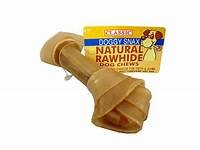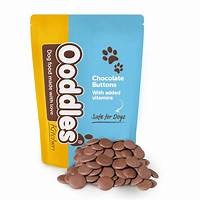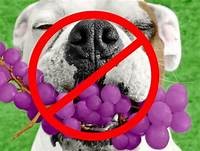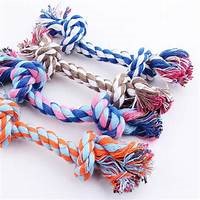Pets bring joy, companionship, and unconditional love into our lives. However, ensuring their safety is a crucial responsibility for every pet owner. From household hazards to outdoor dangers, understanding potential risks can help prevent accidents and keep your furry friends safe and happy.
Common Household Hazards
Your home should be a safe space for your pets, but certain everyday items can pose a threat. Here are some common household hazards:
- Toxic Foods: Chocolate, grapes, onions, and xylitol (found in sugar-free products) can be harmful to pets.
- Household Plants: Many popular plants, such as lilies (toxic to cats) and aloe vera, can be dangerous if ingested.
- Cleaning Products: Store all cleaning agents out of reach, as many contain chemicals that can be toxic if licked or ingested.
- Electrical Cords: Pets may chew on cords, leading to electric shocks or injuries. Keep cords covered or out of reach.
Outdoor Safety Tips
Exploring the outdoors can be exciting for pets, but it also comes with risks. Here’s how you can keep them safe:
- Proper Identification: Ensure your pet wears a collar with an ID tag and is microchipped in case they get lost.
- Leash Safety: Always use a leash in public areas to prevent accidents and encounters with aggressive animals.
- Extreme Weather Precautions: Avoid walking pets on hot pavement, provide shade in summer, and keep them warm in winter.
- Toxic Plants and Pesticides: Be cautious of plants and chemicals in gardens that could be harmful if ingested.
Weather
Ensuring the safety and well-being of your pets during extreme weather conditions is crucial. Here’s a comprehensive guide on how to protect your animals during hot and cold weather, as well as tips for calming dogs during thunderstorms.
Hot Weather Safety
- Hydration and Shade: Ensure your pets have access to fresh, clean water at all times. Provide shaded areas where they can escape direct sunlight.
- Avoid Overexertion: Limit exercise during peak heat hours. Opt for early morning or late evening walks when temperatures are cooler.
- Never Leave Pets in Vehicles: Even with windows cracked, the interior of a car can quickly reach dangerous temperatures, leading to heatstroke.
- Protect Paws: Hot pavement can burn your pet’s paw pads. Place your hand on the pavement; if it’s too hot for you, it’s too hot for them.
- Grooming: Regular brushing can help with heat regulation. However, avoid shaving your pet, as their coat protects against sunburn and overheating.
Cold Weather Safety
- Limit Exposure: Keep pets indoors during extreme cold. When outside, ensure exposure is brief and monitor for signs of discomfort.
- Warm Shelter: If pets are outside, provide a dry, insulated shelter elevated off the ground, with bedding changed regularly to maintain warmth.
- Protect Paws: After walks, wipe your pet’s paws to remove ice, snow, and harmful chemicals like antifreeze, which is toxic to animals.
- Clothing: Short-haired breeds may benefit from a sweater or coat to retain body heat during walks.
- Avoid Space Heaters: These can pose burn risks or fire hazards. Instead, provide warm bedding in a draft-free area.
Thunderstorm Anxiety
- Create a Safe Space: Designate a quiet, comfortable area where your dog can retreat during storms.
- Use Calming Aids: Products like Thunder shirts apply gentle pressure, which can have a calming effect.
- Sound Therapy: Play calming music or white noise to mask the sound of thunder.
- Desensitization: Gradually expose your dog to recorded storm sounds at low volumes, pairing the experience with positive reinforcement to build a tolerance.
- Stay Calm: Your demeanor influences your pet. Remain calm and provide reassurance without reinforcing anxious behavior.
By following these guidelines, you can help ensure your pets remain safe and comfortable during various weather conditions.
Food, Treats and Toys
Ensuring the safety of your pets involves being vigilant about the treats and toys you provide. Certain items, while popular, can pose significant health risks to dogs and cats. Here’s a guide to help you make informed choices:
Unsafe Food & Treats:
- Rawhide Chews: Commonly given to dogs, rawhide chews can be hazardous. They may contain toxic chemicals used during processing and can swell in the stomach, leading to choking or intestinal blockages. Additionally, they can cause tooth damage.
- Chocolate: Toxic to both dogs and cats, chocolate contains theobromine, which can lead to serious health issues.
- Grapes and Raisins: Even small amounts can cause kidney failure in dogs and cats.
- Onions and Garlic: These can lead to anemia in pets.
- Xylitol: An artificial sweetener found in many human foods, xylitol is extremely toxic to dogs and cats.
Unsafe Toys:
- Rawhide Toys: Similar to rawhide chews, these toys can break into small pieces, posing choking hazards or causing intestinal blockages.
- Rope Toys: While fun, rope toys can fray over time. If ingested, the fibers can cause gastrointestinal issues or blockages.
- Small Toys: Toys that are too small can be choking hazards, especially for smaller pets.
- Toys with Small Parts: Items with buttons, ribbons, or tags can be torn off and ingested, leading to choking or blockages.
- Cheap Plastic Toys: Low-quality plastic toys may contain harmful chemicals like phthalates or BPA, which can be toxic to pets.
Rawhide Chew
A popular dog treat that can cause choking or intestinal blockages.

Chocolate
Contains theobromine, toxic to both dogs and cats.

Grapes and Raisins
Even small amounts can lead to kidney failure in pets.

Rope Toy
Can fray over time, leading to ingestion of fibers.

Small Toy
Presents a choking hazard, especially for smaller pets.

- Choose Safe Alternatives: Opt for natural chews free of harmful chemicals, such as high-protein natural treats.
- Supervise Playtime: Always monitor your pets with new toys to ensure they are used safely.
- Regular Inspections: Check toys regularly for signs of wear and tear, and replace them as needed.
By being mindful of the treats and toys you provide, you can help ensure the health and safety of your beloved pets.
Firework and Loud Noise Protection
Many pets become anxious and scared during loud noises like fireworks or thunderstorms. To help them stay calm:
- Create a Safe Space: Provide a quiet, comfortable area where your pet can retreat.
- Use White Noise: Playing soft music or using a white noise machine can help drown out loud sounds.
- Calming Products: Consider using anxiety wraps, pheromone diffusers, or consulting a vet for anti-anxiety solutions.
- Avoid Outdoor Exposure: Keep pets indoors during fireworks or storms to prevent them from running away in fear.
Pet Safety While Traveling
Whether going for a short drive or a long trip, ensure your pet’s safety on the road:
- Use Proper Carriers: Small pets should be secured in a travel carrier, while larger pets should have seatbelt harnesses.
- Avoid Leaving Pets in Cars: Never leave your pet in a parked car, as temperatures can rise quickly and cause heatstroke.
- Pack Essentials: Bring food, water, a leash, and any medications your pet may need.
- Plan for Rest Stops: Allow pets to stretch and relieve themselves during long trips.
Emergency Preparedness for Pets
Natural disasters or unexpected emergencies can happen anytime. Be prepared with a pet emergency plan:
- Emergency Kit: Include food, water, medications, a leash, a carrier, and important documents.
- Evacuation Plan: Know where pet-friendly shelters or hotels are located in case you need to evacuate.
- First Aid Knowledge: Learn basic pet first aid to handle minor injuries until professional help is available.
Final Thoughts
Keeping your pet safe requires awareness, planning, and a little extra care. By identifying potential risks and taking preventive measures, you can ensure a secure and loving environment for your furry companions. After all, a safe pet is a happy pet!